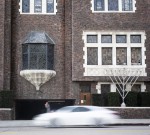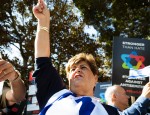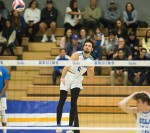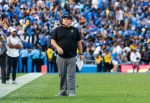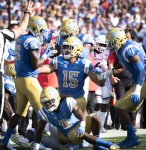This post was updated Jan. 11 at 3:41 p.m.
The Los Angeles City Council is considering opening a housing project in Westwood to provide housing for homeless people.
The project creates temporary “bridge housing” for homeless individuals and was created to expand housing for the Los Angeles homeless population. The suggested bridge housing facility in Westwood would be located within Chabad of Westwood’s building on Gayley Avenue. Each facility in the project will remain open for three years.
Bridge housing facilities differ from traditional homeless shelters because they offer professional mental health and anti-addiction services. Residents will also be offered three meals a day, storage and space for their pets.
Los Angeles Mayor Eric Garcetti is evaluating potential bridge housing facilities throughout LA in an effort to combat homelessness as a part of his “A Bridge Home” campaign. According to the 2018 Homeless Count, approximately 31,516 individuals experience homelessness in Los Angeles and 23,000 individuals are unsheltered.
Los Angeles City Councilmember Paul Koretz proposed the Westwood location as a possible bridge house after a Rabbi from Chabad of Westwood said he would be willing to help with the project. Jeff Ebenstein, directory of policy and legislation for Koretz, said the Chabad offered to help with the project by using some of the space within the Chabad building.
“They have been helping with homeless services for decades so Councilmember (Koretz) asked if he would be willing to help with a homeless shelter here in the city,” Ebenstein said. “He agreed and suggested a creative out of the box solution to do it here in the Chabad headquarters.”
The Chabad of Westwood house currently hosts various events for the Jewish community in Westwood, including sermons and educational services. The proposed bridge housing would utilize some of the space within the building, if approved by the council and the Chabad.
Ebenstein added that this could be the first bridge housing site in the city that will use space within a pre-existing building. All other planned sites will be built on vacant lots near dense homeless encampments.
Michael Skiles, president of the North Westwood Neighborhood Council, said he thinks the resources that bridge housing offers overcome many of the barriers that usually discourage people from entering a shelter.
“They let people keep their dog, they let people keep and have relationships with any lovers they may have, they give people the opportunity to return to the same bed each night,” he said. “These shelters take a mindset that these are equal human beings who deserve to be treated with dignity and respect.”
Andrew Thomas, executive director of the Westwood Village Improvement Association, said he thinks the bridge housing projects are something to be being proud of.
“This is one of those cases where I think we should all be proud to be Angelenos, the city of Los Angeles is experiencing probably the worst of the entire homeless crisis in this country and we’ve stepped up to take action,” Thomas said. “I hope that it lets our local transients transition back into healthy and productive lives”.
